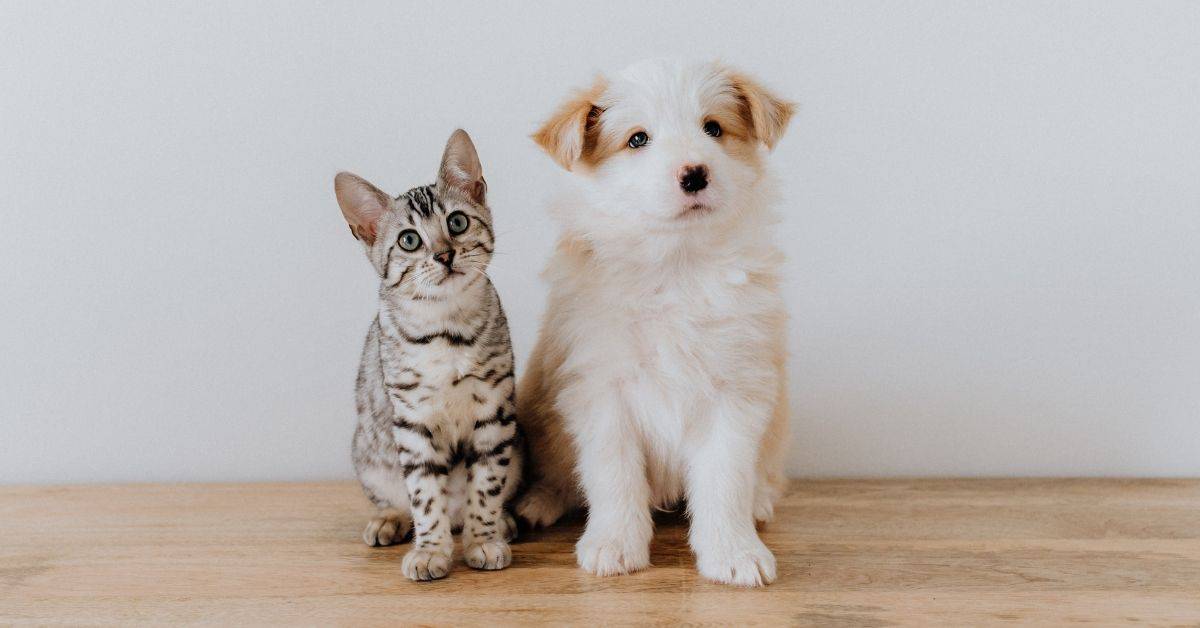As the old adage goes, “fighting like cats and dogs,” it’s easy to believe that these two species are inherently antagonistic.
Is it nature’s design, or is it something we’ve simply accepted without fully understanding the complexities behind their interactions?
Why do dogs and cats hate each other (sometimes)?
It might surprise you that dogs and cats can coexist, even enjoy each other’s company, with the right understanding and handling from their human caregivers.
This article aims to delve into the intriguing dynamics of dog-cat relationships and shed light on how we can foster harmony in a multi-pet household.
Understanding The Basis Of Dog-Cat Relationships
Instinctual Differences And Communication Barriers
At first glance, dogs and cats might seem similar.
They’re both domesticated pets, after all.
But dig a little deeper, and you’ll find that they have vastly different evolutionary backgrounds.
Dogs, descendants of wolves, are pack animals.
They engage in cooperative hunting and have a robust system of social cues.
On the other hand, cats descend from solitary hunters like the African wildcat and rely on stealth and surprise.
A cat’s idea of play might be stalking and pouncing, which can seem aggressive to a dog.
Similarly, a dog’s direct approach can be overwhelming to a cat, which prefers a more cautious approach.
Territorial Nature Of Dogs And Cats
Just as they differ in their social interactions, dogs and cats also have different concepts of territory.
Dogs are often more active in defending their territory, while cats lean towards scent marking.
This divergence can lead to conflict, especially in a shared living space.
For instance, a dog may interpret a cat’s scent marking as an invasion of their space, leading to tension.
Understanding these instinctual behaviors can help pet owners manage their pets’ territorial instincts and reduce potential conflicts.
The Role Of Socialization
Socialization plays a pivotal role in shaping your dog’s future relationships with cats.
Puppies that are exposed to cats during their early socialization periods, generally between 3 and 12 weeks, are likely to be more comfortable around them as adults.
Make sure these experiences are positive and that both the puppy and cat are safe during their interactions.
Effective socialization can significantly reduce potential conflicts down the line and promote a harmonious co-existence.
Case Studies Of Successful Dog-Cat Relationships
Believe it or not, the internet is full of heartwarming stories and videos of dogs and cats living together in blissful harmony.
These case studies offer hope and inspiration, showcasing that with understanding, patience, and the right techniques, even the most unlikely friendships can blossom.
They serve as powerful reminders that the age-old belief of dogs and cats being sworn enemies can be debunked.
Strategies To Improve Dog-Cat Relationships
Proper Introductions And Gradual Acclimation
A successful first impression can pave the way for a harmonious relationship between dogs and cats.
Introducing them gradually and in a controlled environment can make a significant difference.
Start by allowing them to sniff each other’s scent from under a door or through a gate, without any physical interaction.
This slow introduction allows them to acclimate to each other’s presence without feeling threatened.
Slowly increase their exposure to each other, always ensuring that both animals feel safe and secure.
It’s essential to be patient during this process—rushing can lead to setbacks and prolong the acclimation period.
Encouraging Positive Interactions Through Play And Training
Establishing positive associations between your pets can greatly improve their relationship.
Engage your pets in mutual play sessions or reward-based training.
A game of ‘fetch’ with the dog and ‘chase the laser pointer’ with the cat can take place simultaneously, creating a shared, positive environment.
During these sessions, watch for signs of stress or aggression and intervene as needed to keep the interactions positive.
With time, these shared experiences can help reduce tension and build a peaceful coexistence.
In the end, it’s crucial to remember that every dog and cat is an individual with its own personality and preferences.
While we’ve explored some general strategies to improve dog-cat relationships, what works best will depend on your pets’ unique needs and temperaments.
With understanding, patience, and a dash of creativity, we can help our dogs and cats overcome their differences and live together in harmony.
What You, As A Dog Owner, Can Do
Understanding Your Dog’s Behavior
As a dog owner, it’s important to not only acknowledge but also understand your pet’s behavior, especially around cats.
Recognize that chasing a cat might be a part of your dog’s predatory instinct or merely playful curiosity.
Paying attention to subtle signs such as body language, eye movement, and vocalizations can provide valuable insight into what your dog is feeling.
It’s crucial to differentiate between these behaviors because while playfulness can be managed and trained, a strong predatory instinct might require professional intervention for the safety of all pets involved.
Training Your Dog For Positive Interactions
Training your dog to behave positively around cats is not just beneficial, it’s necessary for a peaceful multi-pet household.
Introduce command training such as ‘leave it’ or ‘stay’, which can be used if your dog gets overly excited around your cat.
Rewarding your dog for calm and controlled behavior around the cat can reinforce this as the expected norm.
In some instances, if the dog’s behavior is hard to manage, it might be necessary to seek help from a professional trainer or animal behaviorist.
In conclusion, dogs and cats don’t necessarily ‘hate’ each other.
This myth has largely been perpetuated by their different communication styles and behaviors.
However, with proper introductions, training, and understanding, dog-cat relationships can flourish.
As pet owners, it is our responsibility to foster this understanding and guide our pets towards peaceful coexistence.
The journey may require patience and effort, but the reward—a harmonious multi-pet household—is undoubtedly worth it.
Before You Go…
Now you know why dogs and cats hate each other.
If you want to learn more, read the following articles too!
Or watch this video:


